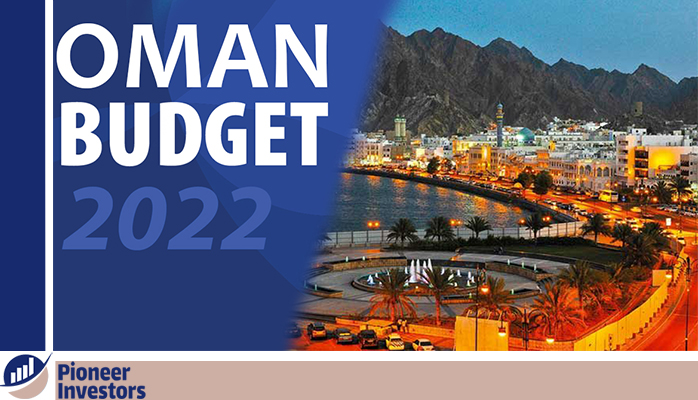Important indicators in the Sultanate of Oman’s budget for 2022

Important indicators in the Sultanate of Oman’s budget for 2022
Pioneer Investors – After it was exhausted by the drop in oil prices during the past years and the repercussions of the Corona pandemic, the Sultanate of Oman keeps trying to overcome its annual budget deficit and introduce real reforms that revive its economy.
In recent years, the Sultanate of Oman has embarked on a set of financial and economic reforms to confront the threats posed by the collapse of oil prices.
financial reforms
Since Haitham bin Tariq Al Said became the new ruler of the Sultanate early last year, the state has embarked on a program to reduce subsidies and achieve financial balance.
The Omani government began implementing a set of measures last year to reform its financial situation, including the introduction of value-added tax, and the decision to work with the IMF to develop a debt strategy.
Muscat also worked to address the financial imbalance (increasing expenditures concerning revenues), which included applying the value-added tax of 5%, which is expected to generate returns of 1% to GDP.
The Sultanate achieved a set of results, including an increase in non-oil revenue sources by 17%, a 13% reduction in government unit expenditures, a 20% reduction in investment expenditures in the state’s general budget, and a 50% reduction in government support allocations.
2022 budget
The latest indication of the success of Oman’s economic measures was the announcement of its budget for the year 2022, which witnessed the lowest deficit since 2014.
On December 12, 2021, the Sultanate of Oman announced its draft budget for the next year 2022, with an estimated total deficit of 1.5 billion riyals ($3.9 billion).
Omani Finance Minister Sultan bin Salim al-Habsi at a conference to announce the outlines of the Sultanate’s budget during 2022, said that the general budget law estimated the price of a barrel of oil at $50 a barrel.
The Sultanate’s oil production rose to 960,000 barrels per day during the first ten months of the year, compared to 955 million barrels per day in the comparable period in 2020.
Al-Habsi said at the conference that the estimated public spending amounted to 12.1 billion riyals ($31.46 billion), an increase of 2% over what was expected to be spent at the end of this year.
The state’s total public revenues are estimated at 10.58 billion Riyals ($27.5 billion), which is 6% over what is expected to be collected up to the end of 2021.
Oil and gas revenues represent 68% of total revenues, while non-oil revenues represent 32%, according to the Minister of Finance.
Earlier this month, government data showed a decrease in the budget deficit of the Sultanate of Oman by 62.9% during the first ten months of 2021 to 1.006 billion riyals ($2.62 billion).
Decisive year
The Sultanate views 2022 as a critical year on the way to reducing the fiscal deficit and putting more pressure on debts, in conjunction with the implementation of development programs to gradually move away from the risks caused by the Corona pandemic, according to previous statements by its officials.
The expected deficit in the 2022 budget is 30% less than the current fiscal year’s budget estimates, which were targeting a deficit of 2.24 billion riyals (about $5.8 billion).
Experts from Standard & Poor’s, the credit rating agency in its recent report expects that Muscat’s fiscal deficit will shrink to 4.2% of GDP by the end of this year from 15.3% last year.
The agency had recently revised its vision for Oman from steady to positive due to the increase in oil prices and its continued implementation of financial reform plans that are expected to reduce the government deficit and slow the rise in debt levels over the next three years.




